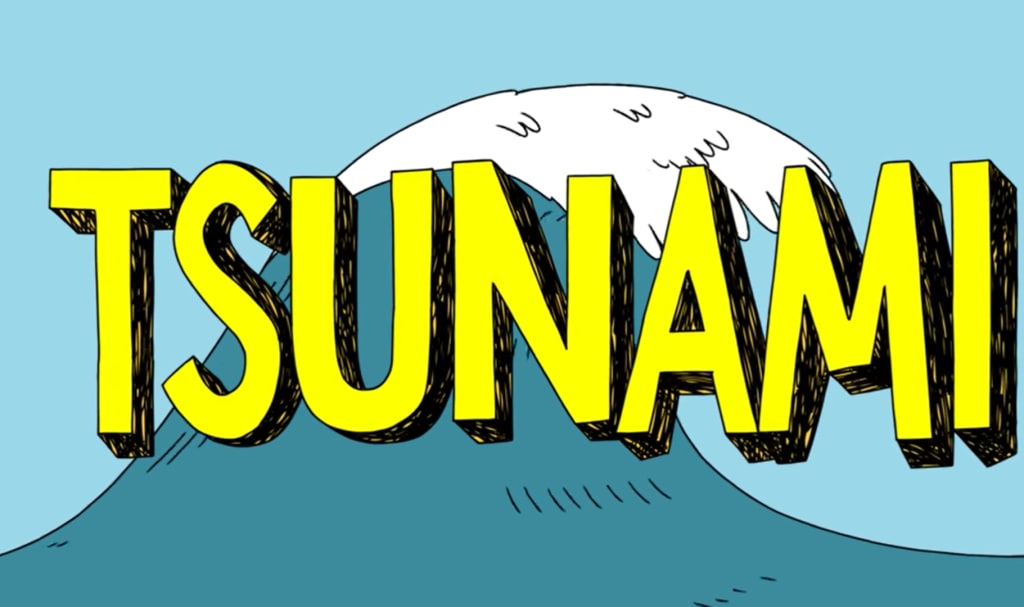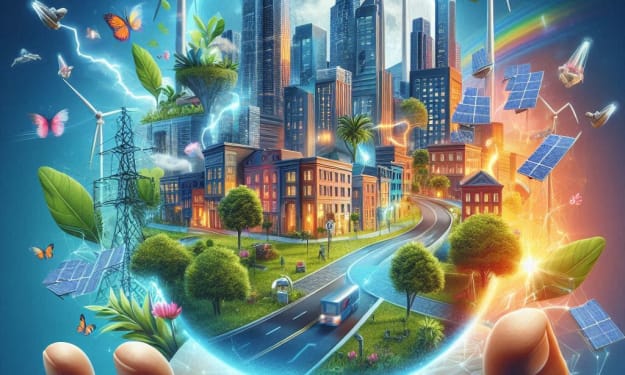
A long time ago, in 479 BC, Persian soldiers attacked the Greek city of Potidaea. When they arrived, the water moved back further than usual, creating an easy path for them. But this wasn't just luck. Before they could get very far, the water came back with a huge wave that drowned the attackers. The people of Potidaea thought the sea god Poseidon saved them, but it was probably a tsunami that saved them. Tsunamis are often called tidal waves, but they're not related to the regular tides caused by the Moon and the Sun.
Tsunamis are like bigger versions of regular waves. They have a low point and a high point, but they're not made of moving water. Instead, they're created by the movement of energy through the water. The difference is where this energy comes from. Normal waves get their energy from the wind, but tsunamis get their energy from underwater sources, like volcanic eruptions, underwater landslides, or most commonly, earthquakes under the ocean. When tectonic plates on the Earth's surface shift during an earthquake, they release a huge amount of energy into the water. This energy moves up to the surface, pushes water upward, and gravity makes it ripple outward horizontally, creating a tsunami that can travel very fast, over 500 miles per hour.
When a tsunami is far from the coast, it can be hard to detect because it affects the entire depth of the water. But as it gets closer to the shore, something called "wave shoaling" happens. In shallow water, there's less water for the energy to move through, so it gets compressed. This makes the tsunami slow down, but its height increases, sometimes reaching as much as 100 feet. Tsunamis are called "harbor waves" in Japanese because they mostly appear near the coast. When the low point of the tsunami reaches the shore first, the water goes back much farther than usual before the big wave arrives, which can be very dangerous.
Tsunamis not only flood coastal areas but can also destroy buildings and trees far inland, especially in low-lying places. After the big wave, the water withdraws, taking debris and anything or anyone in its path. In 2004, a tsunami in the Indian Ocean was one of the deadliest natural disasters ever, killing over 200,000 people in South Asia.
So, how can we protect ourselves from this powerful natural force? Some people have tried to build sea walls, floodgates, and channels to redirect the water, but these methods don't always work. In 2011, a tsunami overcame the flood wall protecting Japan's Fukushima Power Plant, leading to a nuclear disaster and over 18,000 deaths. Instead, many scientists and policymakers are focusing on early detection, monitoring underwater pressure and seismic activity, and creating global communication networks to quickly share warnings. When nature is too strong to stop, the safest thing to do is get out of its way.
. . . . . . . . . . . . . . . . . . . . . . . . . . . . . . . . . . . . . . . . . . . . . . . . . . . . . . . . . . . . . . . . . . . . . . . . . . . . . . . . . . . . . . . . . . . . . . . . . . . . . . . . . . . . . . . . . . . . . . . . . . . . . . . .
About the Creator
MOSTAFA SALMAN
"Exploring the depths of creativity through the written word". On a journey to share my thoughts, experiences, and imagination with the world.
Enjoyed the story? Support the Creator.
Subscribe for free to receive all their stories in your feed. You could also pledge your support or give them a one-off tip, letting them know you appreciate their work.






Comments
There are no comments for this story
Be the first to respond and start the conversation.